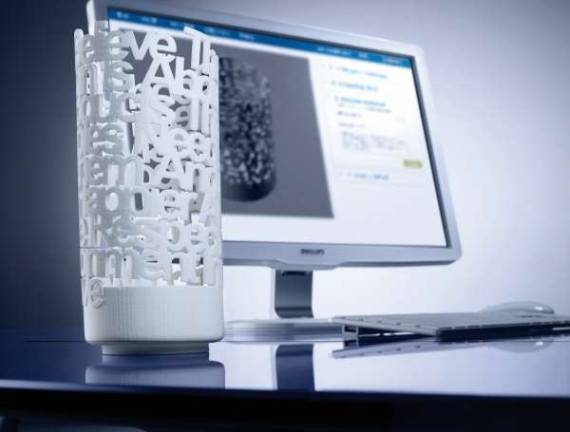3D Printing Saves the Universe: Only 300 Years to Go

The process of 3D printing is called additive manufacturing, and it's a pretty simple idea: A machine squirts some material in layers based on a 3D computer model until the design has become a real life object. There's a few different methods and processes to choose from, but here I'm just focusing on "Fused Deposition Modeling"(FDM) (aka "Fused Filament Fabrication"(FFF) to avoid patent battles). Basically, FDM/FFF machines use spools of plastic filaments which are melted and layered into solid objects. There are companies like [Freedom of Creation](http://www.freedomofcreation.com/) and [Shapeways](http://www.shapeways.com/) that offer on-demand printing. A lot of their catalogue is knick-knack stuff like jewelry and iPhone cases, but a few allow customers to upload designs and have custom products printed and shipped out. But these companies are still essentially creating novelty items without much practical value, and their prices aren't great for what you get. My bet for the Future of Stuff is on DIY outfits like Brooklyn based [MakerBot Industries](http://www.makerbot.com/). Anybody can go on their website and buy the Thing-O-Matic, a desktop 3D printer for home use, as well as the items needed to build or improve your own. It's still a little expensive at $2400 for the fully assembled version or $1,099 for the build-it-yourself kit, but compared to $20k for commercial 3D printers it's still quite a deal. Also, it's all open source technology which means that hobbyists are constantly working on making the technology better and cheaper. For example, [PrintrBot](http://www.printrbot.com/) is an affordable ($500ish) 3D Printer created by Brook Drumm. He put the idea up on [http://www.kickstarter.com/projects/printrbot/printrbot-your-first-3d-printer?ref=card](http://nypress.com/%3Ca%20href=)>Kickstarter with a goal of $25k to start manufacturing 3D Printers that anybody could build and use. By the time the Kickstarter clock ran out, PrintrBot had pulled in a staggering $830,827 USD. The first PrintrBots are expected to ship out in January for the original funders. Then Brook hopes to start up a 'Bot Farm' for mass-(re)production. Both MakerBot and PrintrBot are evolutions on the original [RepRap](http://reprap.org/wiki/Main_Page) (REPlicating RAPid prototyper) project. Started in 2005 by Dr. Adrian Bowyer, a Senior Lecturer in mechanical engineering at the University of Bath in the United Kingdom, [RepRap.org](http://reprap.org/) is a community of enthusiasts bent on creating a machine that can build (most of) the parts needed to recreate itself. On the Wiki are the instructions for anybody who wants to take the time to build their own 3D printer. I expect that as the technology progresses we will begin to see 3D printers become a commonplace household appliance. Besides the fact that it just makes sense to have personal access to the power of manufacturing and product replacement/repair, these machines will enable people to fully customize the items we use everyday. Also, think of all the warehouse space that could be repurposed into Awesome Starving Artist Pads. Then of course there's the environmental benefit to consider. By now most people are aware of the giant "Plastic Trash Vortex" swirling around the Pacific Ocean. While 3D printing won't lessen the disposable lifestyle we've grown to enjoy, they might do much to reduce the environmental impact by allowing manufacturers to print what consumers need when they need it. Speaking of Green, check out the [Filabot Kickstarter](http://www.kickstarter.com/projects/rocknail/filabot-plastic-filament-maker) project. They're trying to get funding to create a machine that will recycle plastic waste into the filament used by RepRap 3D printers. As of now you've still got a month to support their Awesome Science. Personally, my early interest in 3D Printing had more to do with my intense love of Star Trek: The Next Generation. The Replicators onboard the USS Enterprise made everything from Captain Picard's Earl Grey tea to medicines used by Dr. Crusher, and allowed the post-scarcity utopia of Gene Roddenberry's universe. While the printers available now are a far walk from the miracle machines of the 24th century, we've still got three more centuries to get this stuff right. Engage.